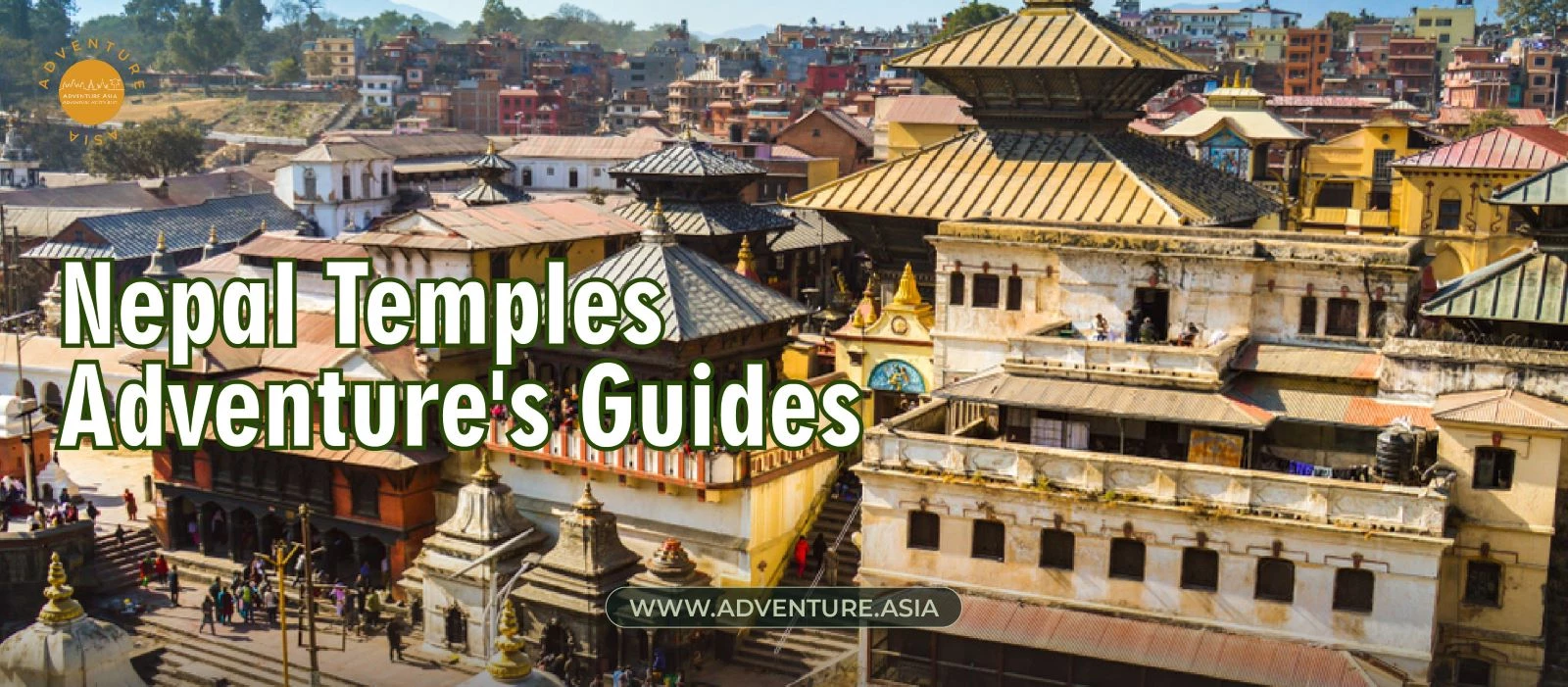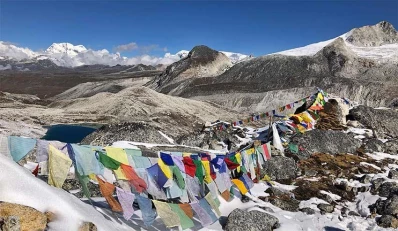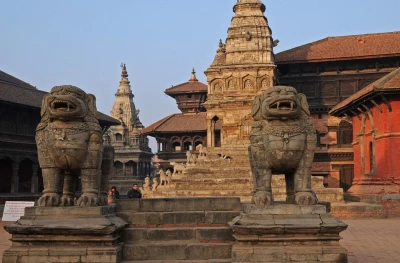
Nepal Temples: An Adventurer's Guide to Himalayan Spirituality
- 1. The Intertwined Threads of Hinduism and Buddhism
- 2. Must-Visit Hindu Temples for the Adventurous Soul
- 3. Significant Buddhist Sanctuaries for Inner Exploration
- 4. Experiencing Nepal's Temples: A Guide for Adventurous Souls
- 5. Beyond the Famous Temples: Uncovering Hidden Gems
Nestled amidst the majestic Himalayas, Nepal isn't just a haven for adventure seekers. It's a land steeped in rich spiritual traditions, where ancient temples stand as testaments to a vibrant tapestry of Hinduism and Buddhism.
For the adventurous soul, exploring these Nepal temples isn't just sightseeing; it's a journey into the heart of Nepal's culture and a chance to witness age-old rituals unfold.
This guide equips you, the intrepid explorer, with the knowledge to navigate Nepal's most prominent temples, understand their significance, and experience them with respect.
1. The Intertwined Threads of Hinduism and Buddhism
Hinduism and Buddhism are the lifeblood of Nepal, existing in a unique harmony. Temples often reflect this peaceful coexistence, with architectural influences from both religions. Hindus revere a pantheon of deities, with Shiva, the destroyer and regenerator, and Vishnu, the preserver, holding central roles. Buddhists follow the teachings of Siddhartha Gautama, the Buddha, seeking enlightenment and liberation from suffering.
2. Must-Visit Hindu Temples for the Adventurous Soul
2.1 Pashupatinath Temple, Kathmandu: A Journey Through Life and Death
Nicknamed the "City of the Dead," the Pashupatinath Temple complex in Kathmandu is unlike any other. This sprawling sacred site is the holiest Hindu shrine in Nepal, where the cycle of life and death unfolds before your eyes. Witness cremation rituals performed along the banks of the Bagmati River, a powerful experience that confronts the impermanence of existence.

The main temple, dedicated to Lord Shiva, is a maze of courtyards and shrines. Intricate carvings and towering shivalingas (representations of Shiva) create a mesmerizing atmosphere. Remember, dress modestly and be respectful of the ongoing rituals.
2.2 Swayambhunath (Monkey Temple): Atop the Kathmandu Valley
Ascend the stairs guarded by playful monkeys to reach Swayambhunath, a magnificent stupa (dome-shaped Buddhist monument) perched atop a hill overlooking Kathmandu. This UNESCO World Heritage Site is an iconic landmark, offering breathtaking panoramic views of the city.

The stupa itself is a powerful symbol of enlightenment. Walk around the base, spinning the prayer wheels as you go, and let the colorful mantras carry your wishes on the wind. Don't be surprised by the resident monkeys who add a touch of whimsy to the experience.
2.3 Changu Narayan Temple: A Walk Through History
Venture outside Kathmandu to the ancient city of Bhaktapur to discover Changu Narayan Temple. This UNESCO World Heritage Site dates back to the 4th century AD and is considered one of the oldest Nepal temples. Dedicated to Lord Vishnu, the temple is a masterpiece of Nepali architecture, featuring intricate carvings and sculptures depicting scenes from Hindu mythology.

Explore the courtyards, marvel at the craftsmanship, and soak in the historical significance of this sacred site. Changu Narayan Temple is a testament to Nepal's rich past and a must-visit for history buffs and adventurers alike.
3. Significant Buddhist Sanctuaries for Inner Exploration
3.1 Boudhanath Stupa: A Beacon of Peace
Boudhanath Stupa, another UNESCO World Heritage Site, is one of the largest stupas in the world. Located in Kathmandu, this colossal structure dominates the skyline and serves as a focal point for Tibetan Buddhists residing in Nepal.
Walk the kora (circumambulation path) around the stupa, spinning prayer wheels and soaking in the peaceful atmosphere. Observe Tibetan pilgrims chanting mantras and prostrating themselves in devotion. The vibrant prayer flags fluttering in the wind add a touch of color to this spiritual haven.
3.2 Maya Devi Temple, Lumbini: Where the Buddha Walked
Lumbini, a serene town in southern Nepal, holds immense significance for Buddhists. It's believed to be the birthplace of Siddhartha Gautama, the Buddha. The Maya Devi Temple stands at the heart of the Lumbini Buddhist Sanctuary, marking the exact spot where the Buddha entered the world.
Explore the archaeological excavations that reveal the remains of an ancient monastery and a sacred pond associated with the Buddha's birth. Lumbini offers a tranquil setting to reflect on the Buddha's teachings and the power of enlightenment.
3.3 Shree Muktinath Temple: A High-Altitude Pilgrimage
For the truly adventurous soul, Shree Muktinath Temple in the Mustang region presents a unique challenge. Perched at a staggering altitude of 3,800 meters (12,467 ft), this temple is dedicated to both the Hindu god Vishnu and the revered Buddhist guru Rinpoche.
Reaching Muktinath requires a challenging trek through the Himalayas, offering stunning landscapes and a chance to experience remote Tibetan culture. The sight of the golden pagoda against the backdrop of snow-capped peaks is a reward in itself. Encounter local pilgrims braving the cold to bathe in the sacred Muktinath ponds, a testament to their unwavering faith.
>>> Read more: Nepal must know before travel
4. Experiencing Nepal's Temples: A Guide for Adventurous Souls
Nepal temples are vibrant expressions of faith and culture. To fully appreciate them, remember these essential tips:
- Dress Modestly: Many temples require respectful attire, covering shoulders and knees.
- Respect Local Customs: Observe ongoing rituals silently and avoid disruptive behavior.
- Seek Permission for Photos: Ask before taking pictures, especially during ceremonies.
- Offer a Small Donation (Optional): A token offering shows respect and supports temple upkeep.
>>> Read more: Differences Between Trekking And Hiking? Which One is Right for You?
5. Beyond the Famous Temples: Uncovering Hidden Gems
While the likes of Pashupatinath and Boudhanath draw crowds, Nepal is brimming with lesser-known temples waiting to be explored. Here are a few suggestions:
- Guhyeshwari Temple: Located in Kathmandu, this temple dedicated to the wrathful aspect of Parvati offers a unique glimpse into esoteric Tantric practices.
- Doleshwor Mahadev: Venture outside Kathmandu to hike to this cave temple nestled amidst scenic hills. Legend says Shiva meditated here, making it a sacred site for devotees.
- Seto Gumba (White Monastery): Nestled in the Solukhumbu region, this Tibetan Buddhist monastery offers stunning mountain views and a chance to experience a serene monastic environment.
Exploring these hidden gems allows you to delve deeper into Nepal's rich tapestry of beliefs and traditions, offering a more personal and authentic experience.
Nepal temples are more than just architectural wonders; they are portals to a world steeped in spirituality and cultural heritage. By venturing beyond the facade, you embark on a journey of self-discovery, encountering ancient rituals, and witnessing the profound faith that resonates within these sacred spaces. So, lace up your boots, pack your sense of adventure, and prepare to be humbled by the magnificence of temples.
Ready to craft your unique Himalayan expedition? Adventure Asia curates unforgettable experiences for seasoned adventurers seeking escapes beyond the tourist trail. Contact us today and let's co-create your dream adventure exploring the soul of Nepal.
- 1. The Intertwined Threads of Hinduism and Buddhism
- 2. Must-Visit Hindu Temples for the Adventurous Soul
- 3. Significant Buddhist Sanctuaries for Inner Exploration
- 4. Experiencing Nepal's Temples: A Guide for Adventurous Souls
- 5. Beyond the Famous Temples: Uncovering Hidden Gems





















